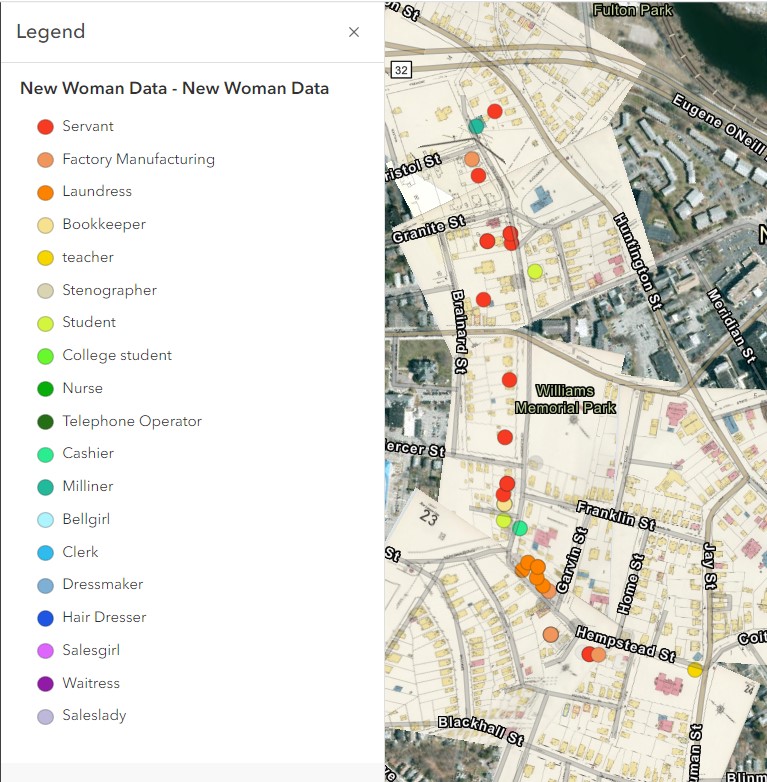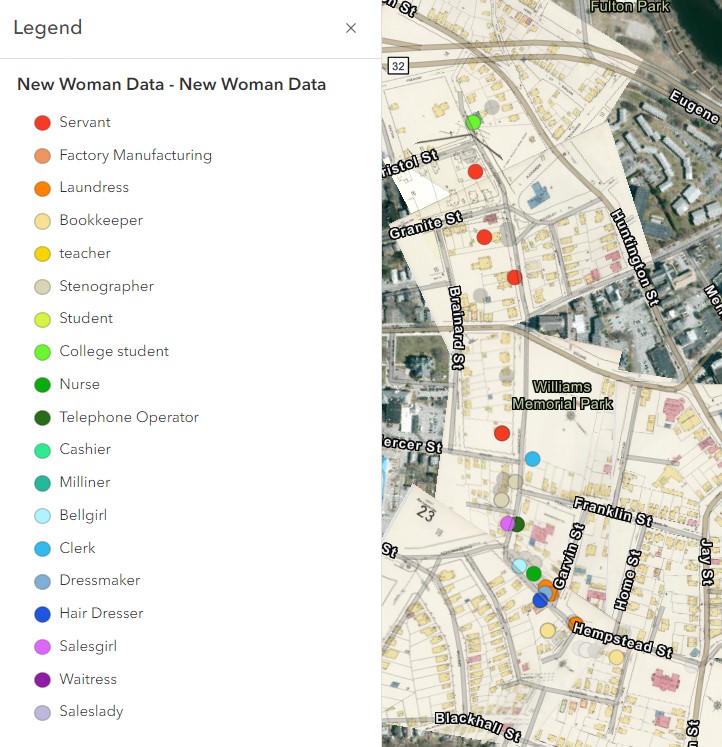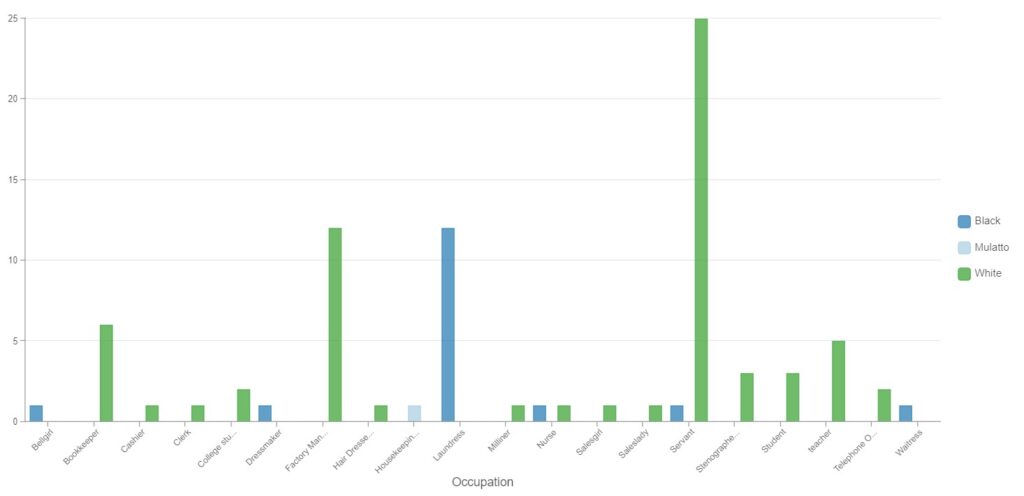The marvel of the “New Woman” in the early 20th century was seeing college-educated women standing in line with working-class women and their goals of independence. Young women nationwide were looking for a modern, new way of life, eager to keep up with the changing times and opportunities. Like other female liberation movements, especially post-World War Two, female liberation took the form of wage work across class lines, providing financial independence from a solitary male family head, leading to escapes from abuse by bosses and relatives. For this unity between women of classes from those who depended on wage work as a means of survival versus those who took up wage work as a form of liberation, the types of work available to each group had different meanings. (Deutsch, 75)
For young women from middle and upper-class households, wage work provided an alternative life to a seemingly monotonous life of managing a house and being dependent on a singular male partner. The women looking for a break from their perceived struggles of home care still relied on domestic servants for their labor. (Deutsch, 75) While they may have still been foisting housework off on another woman of a different social class, there was awareness of the conditions domestic workers were expected to operate in. (Deutsch, 76)

Considering Connecticut College’s opening in 1911 to fill a needed gap in providing women’s education in Connecticut, New London was not isolated from the growing trends of “New Woman’s” liberation. Examining the data collected from young women, ages 16-32, living on Hempstead Street in three censuses, from 1900, 1910, and 1920, a desire for independence and to take charge in the world can be seen. Just slightly earlier than our study, a study conducted by the Women’s Educational and Industrial Union in 1890, found that eighty percent of young women forwent education in favor of full-time employment between the ages of fourteen and seventeen. (Deutsch, 79)

Among the young white women in New London, from the 1900 census to 1920, the number of young women between the ages of 16 to 32 had jobs requiring more schooling or were moving away from manual labor. Twenty-two white women in 1900 were engaged in occupations as either servants or factory work. [A brief note, I will not be further elaborating on the position of labor in domestic service on Hempstead Street, please refer to Prybla’s article also featured on this site] In 1920, only five were employed in domestic service, and there were no accounts of factory work. Rather, employment opportunities now included bookkeeping, stenographers, telephone operators, and nurses.

An important distinction is the inaccessibility of the “New Woman” life to young Black women on Hempstead Street. As the graph below demonstrates, while there were opportunities for advancement and of moving from menial labor jobs for white women, the Black women of Hempstead Street were confined to jobs in domestic service. Laundry was conducted out of the homes of the laundresses, allowing the women to maintain a level of safety and autonomy. (Hunter, 76) Working as a laundress would not have guaranteed financial stability, but it would have meant avoiding a workplace of racism, xenophobia and violence such as those who were in traditional domestic service positions would have experienced. Additionally, the business of laundry would have been conducted within the family, with generations helping each other to get the incredible amount of work needed for cleaning clothes done. And, because this was a female dominated field of work, there also was an expectation of more control over their own wages rather than having to turn the money over to a singular male family head. This is also a cultural difference between the Black families of Hempstead street versus the Irish families such as those listed at 54 Hempstead Street. (Hunter, 83)

At this time, we unfortunately do not have more information than that contained within the census, so we can not determine for sure the motivations and desires of the women living on Hempstead street, but it is interesting to see that there is data mirroring larger national trends with regards to women in education and the general job force.
Citations
Hunter, Tera W. To ‘joy My Freedom: Southern Black Women’s Lives and Labors After the Civil War. Cambridge, Mass.: Harvard University Press, 1997
Deutsch, Sarah. Women and the City : Gender, Space, and Power in Boston, 1870-1940, Oxford University Press, Incorporated, 2000. ProQuest Ebook Central, https://ebookcentral.proquest.com/lib/conncoll/detail.action?docID=241421.